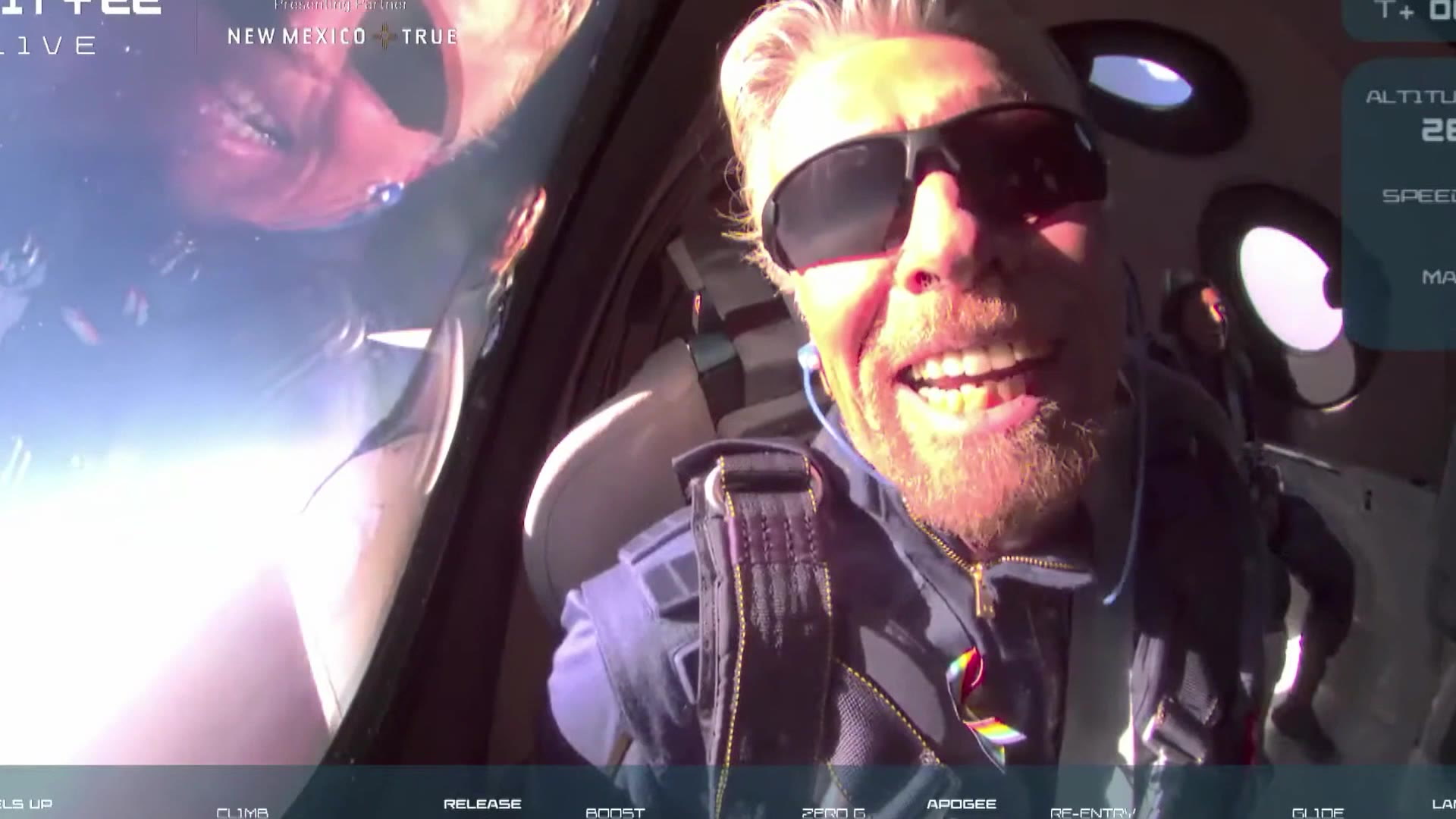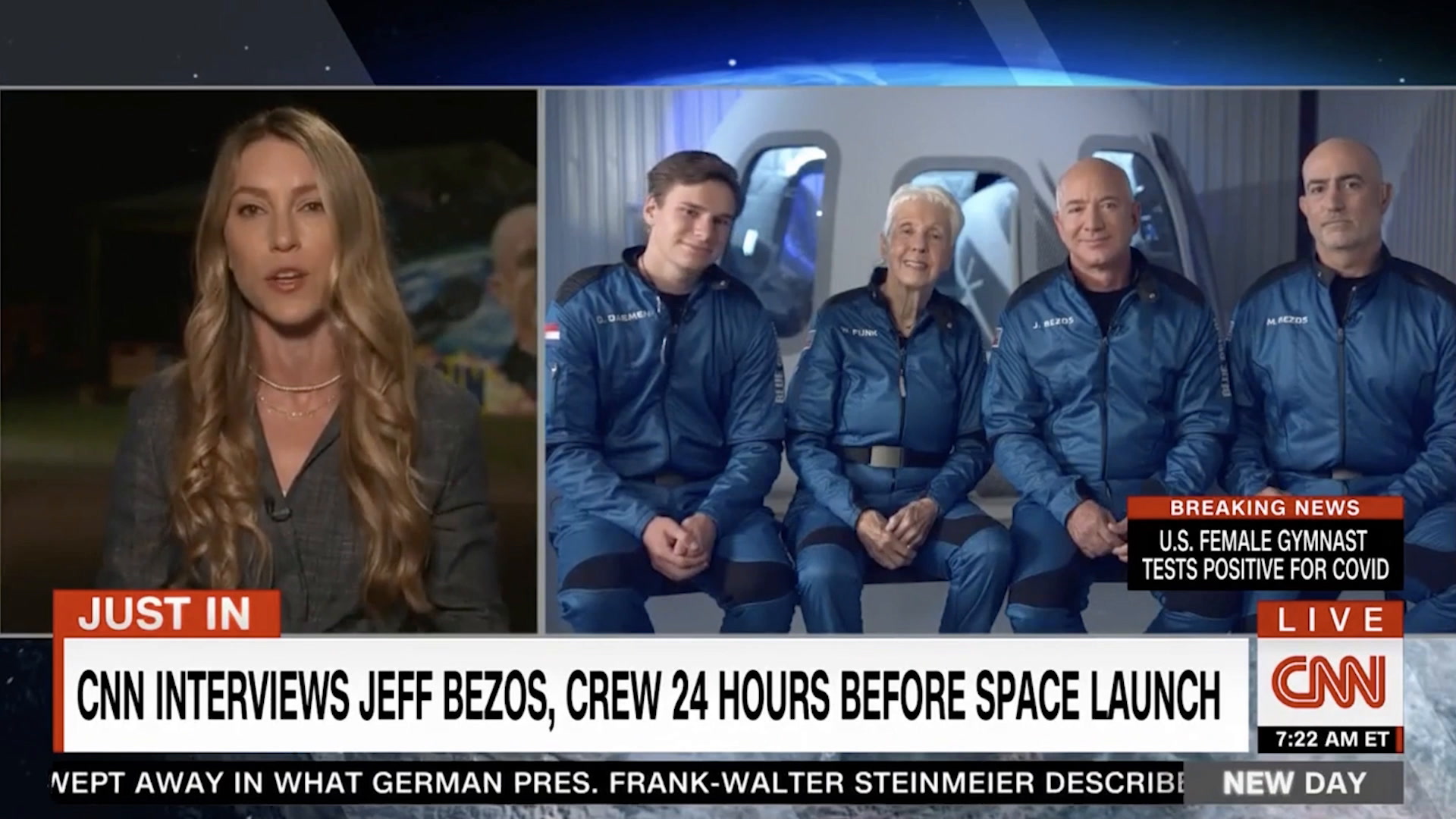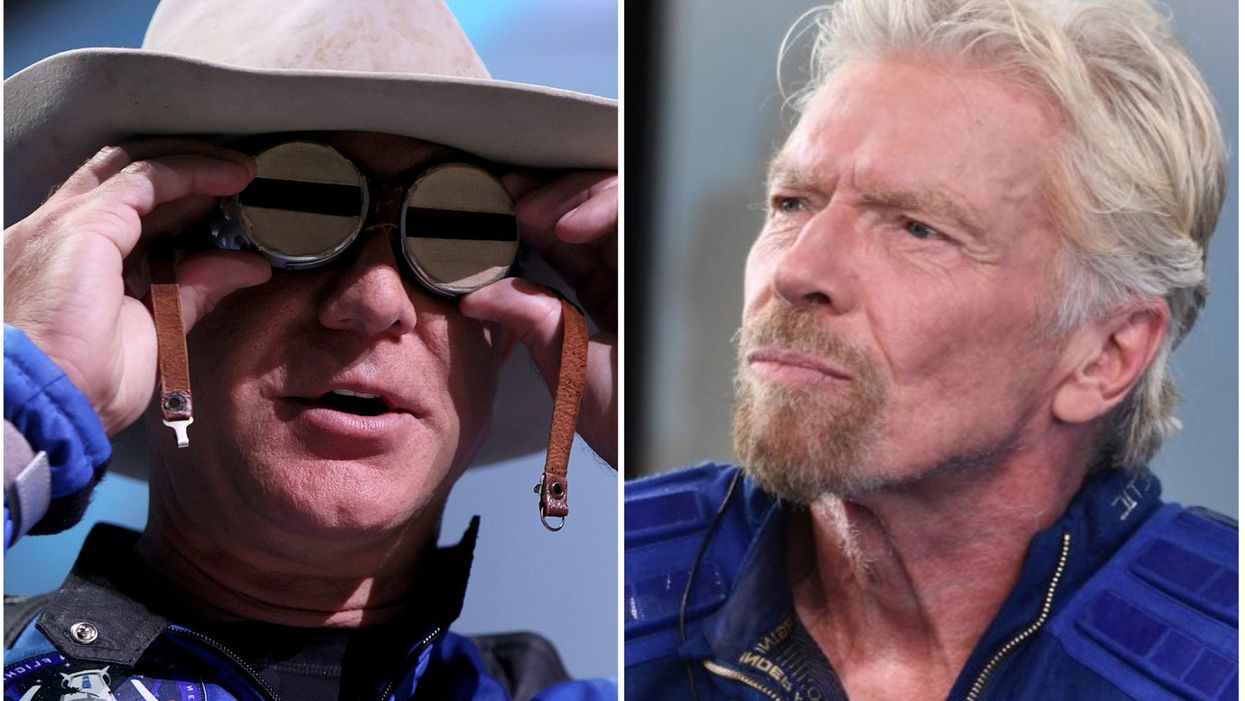News
Harriet Brewis
Aug 24, 2021
Jeff Bezos and Richard Branson saw their childhood dreams come true when they blasted themselves to the edge of space last month.
The billionaires hurtled to altitudes of more than 66 miles and 53 miles respectively during each of their historic trips up to the stars, with the Amazon founder describing his adventure as the “best day ever”.
Along with their broad grins the rivals wore similar blue jumpsuits for their missions, although Bezos topped his off with a cowboy hat while his British counterpart opted for a pair of shades.
And yet, while both journeys were a success for the entrepreneurs as well as their small crews, the two men apparently ran an unnecessary risk with their choice of uniform.
This is according to some of the world’s leading experts in space-travel safety who, in an interview with Bloomberg, pointed out that neither team wore the correct gear to shield them from rapid decompression outside the Earth’s atmosphere.
Pressure suits are required by NASA and other national space agencies to help protect passengers from fatal accidents.

And yet no such standards apply to private companies including Bezos’s Blue Origin, Branson’s Virgin Galactic, and Elon Musk’s SpaceX, which are all racing to get space tourism off the ground. This is because, in the US for example, Congress hasn’t allowed the Federal Aviation Administration (FAA) to set rules to protect passengers.
“The reality is when you go to space, you don’t dress with nice stuff, you dress with the right stuff,” former European Space Agency official Tommaso Sgobba told the news site. Sgobba now serves as executive director of the International Association for the Advancement of Space Safety, so he knows his stuff.
Although the Federal Aviation Administration (FAA) carefully reviews all launch applications to ensure no mishap could harm the public on the ground or a passing plane, it focuses on the reliability of the spacecraft, not on the safety of the spacecraft’s crew.
“It is time, I believe, to update our human spaceflight regulatory framework,” George Nield, who directed the FAA’s office overseeing commercial launches from 2008 to 2018, told Bloomberg.

The commercial launch industry has grown exponentially in recent years, with the FAA overseeing the 400th such launch in May, the news site points out.
Most of these were geared towards expanding satellite networks and transporting other goods into space, but “tourist” flights look set to explode.
The FAA has published “recommended practices” for safety which private companies can follow. The agency also compels all crew members to sign a waiver before flying to confirm that they understand the spacecraft’s risks and that it isn’t certified by the government.
The US has seen 379 human-manned space flights since the early 1960s, four of which ended in fatal accidents, according to Nield.
In other words, Bezos may like his hat but, when it comes to space travel, it’s never good to be a cowboy.
Top 100
The Conversation (0)
Sort by














